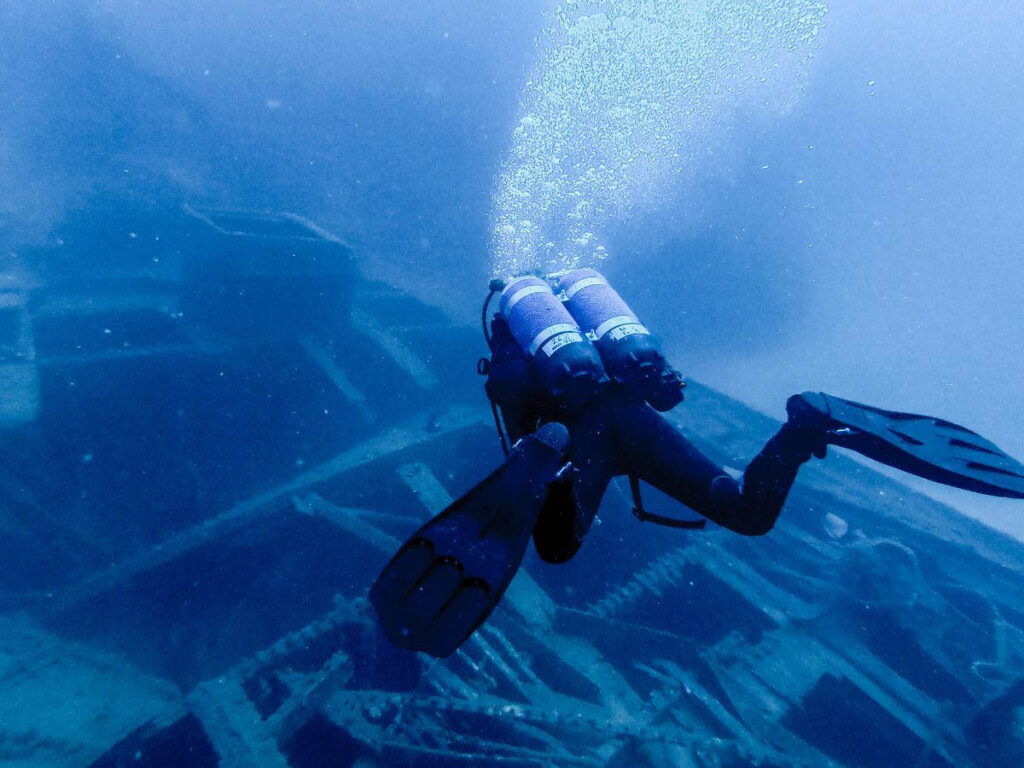Explore the depths of the ocean and historical underwater landmarks with a fun, safe, and successful shipwreck dive. Learn some essential tips for wreck diving.
Shipwreck diving is a thrilling activity that takes scuba diving to another level. It’s an opportunity to immerse yourself in history and inspect marine life in ways that few activities can. However, success in this endeavor requires preparation, knowledge, and a certain skill level. Guarantee a safe, enjoyable, and successful shipwreck dive with a couple of top tips.
1. Master the Essential Scuba Diving Skills
Shipwreck diving is not for beginners. Unlike standard diving, where open water and clear paths are the norm, shipwrecks often involve navigating through confined spaces, dealing with potential entanglements, and contending with unpredictable structures. In addition, you may need to dive to greater depths to reach shipwrecks, so you’ll need more advanced pressure and decompression knowledge.
Scuba diving certifications come in many forms. Some of the top skill levels are dive masters and master divers. Master scuba divers and divemasters have many differences, but certifications allow you to traverse the depths of wrecks comfortably and safely. Both master levels of diving give you essential skill sets like buoyancy control, the proper use of your dive equipment, and handling potential challenges underwater.
2. Select the Right Equipment
The right tools of the trade can significantly improve your diving experience. Tools are necessary for navigation, safety, and potential artifact recovery. Navigational tools, such as underwater compasses and dive computers, are crucial to prevent divers from losing their way in the often complex layout of shipwrecks. Safety tools like dive knives and cutting tools can help divers free themselves if they become tangled in fishing lines or old netting often found around wrecks. Certain diving gear can also enhance comfort. Some essential gear to consider bringing on a wreck dive includes:
- A good dive knife for cutting entanglements and protection against wildlife
- A powerful dive light for darker corners of wrecks
- A penetration line reel for guiding you back to your exit point during interior explorations
- Scuba gloves for warmth and protection against sharp structures and barnacles
3. Understand the Shipwreck
Before diving into a shipwreck, take the time to learn about its history and layout. Understanding the ship’s design can help you navigate its features while underwater. Familiarizing yourself with the local marine life occupying the wrecks and common diving conditions also helps prepare you for the dive, reducing the risks of unforeseen dangers.
4. Respect the Environment
Many shipwrecks serve as artificial reefs, providing habitats and breeding grounds for a diverse range of marine life. They also contain many potential historical artifacts. Make sure you don’t disrupt or make any changes to the shipwreck environment; it’s important to preserve the historical integrity, ecological balance, and aesthetic value of these underwater treasure troves. Respecting the environment and marine life on your dives is essential no matter the type of dive you embark on, but it’s especially pertinent when wreck diving.
Shipwreck diving is an adventure that offers fun, excitement, and the chance to witness history. By following these top tips, you can enjoy a successful shipwreck dive that’s comfortable, fulfilling, and safe. Explore the ocean and the past with a dive among sunken ships, planes, and lost cargo.







